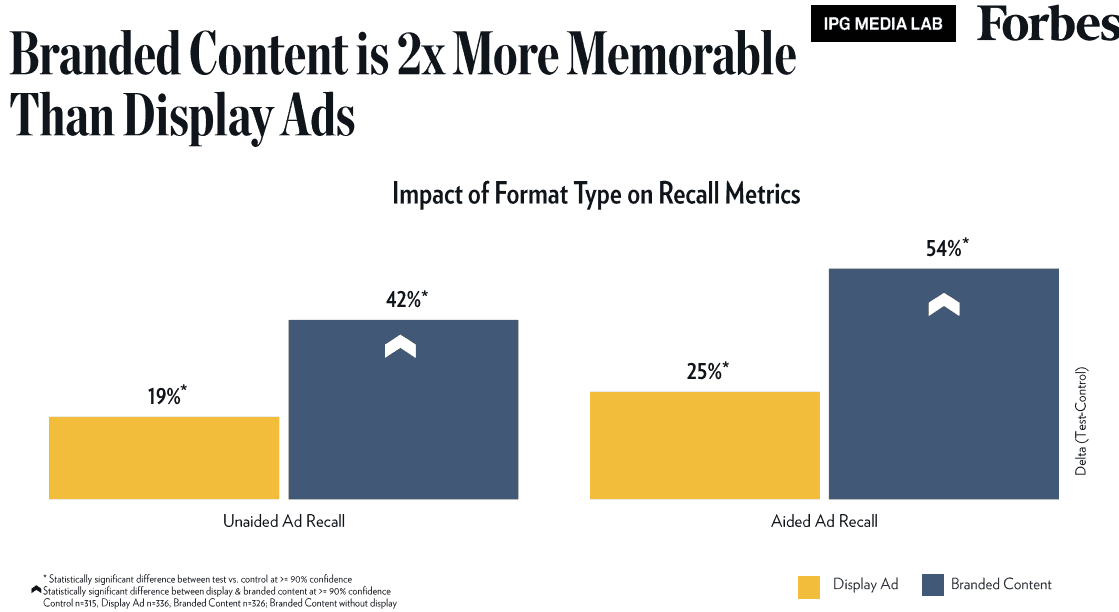Trending
The Association Problem: When Consumers Like Your Ad But Forget Your Brand
A friend and I were recently discussing our favorite TV commercials over drinks because that’s just how cool we are. “I like that car ad where the wife is an astronaut and has to unlock her husband’s car from space,” she said, referring to a Hyundai TV spot. While the narrative had drawn her in, my friend had no idea what brand of car she was supposed to buy after watching it.
I’ve experienced this brand association problem plenty of times myself. A touching ad that ran during the Olympics called “Thank you, Mom” told the stories of mothers supporting their children’s athletic aspirations as the rest of the world was telling them they’d never be able to make it. It stayed in my head for weeks, but had someone asked who was behind the commercial, I wouldn’t have been able to tell them that it was for Proctor and Gamble. It’s good when brands pay attention to emotional narratives in their campaigns, but there still needs to be a natural fit. If consumers can’t remember which car company made that funny astronaut ad, that’s an issue.
Brand association isn’t just a problem with TV commercials. According to a recent study by Infolinks, only 14 percent of participants could remember the company associated with the last display ad they saw. At the same time, brands don’t want to overwhelm their audience with overt promotion. If the name “Hyundai” constantly flashed up on the screen during the spot, the intrusion would distract us from the powerful narrative.
So what’s the solution? Good content marketing. A recent report by Forbes and IPG Media Lab found that consumers are twice as likely to remember branded content—a blog post, video, or other branded experience—than display ads, like a banner image on a website or those sponsored blurbs on the right side of your Facebook page. Fifty-nine percent of participants also said that after seeing branded content, they were likely to seek out more content from that brand in the future.

Take Cabot Cheese as an example. The company’s blog and YouTube channels are chock full of cheese-based recipes and instructional videos, like fried mac & cheese balls and an eggs Benedict grilled cheese. Yes, please. If a consumer (read: me) wasn’t necessarily sold on making a cheese-based meal later, they (I) will certainly be tempted to after taking in Cabot’s content.
As Forbes CRO Mark Howard told Adweek, “Branded content educates audiences on topics in which brands have a domain expertise, allowing our brands to truly connect in a consumer-centric way.”
In order to make sure your audience remembers you, the first step is gaining their trust. Brands need to prove that they’re the most knowledgeable or creative for a given topic before they can justify selling something. Once that’s established, brands can help ensure they remain top of mind for their audience in the future. You wouldn’t try to convince someone that you were a great musician or artist without being prepared to play them a song or show them an acrylic, right?
Decide what you know better than anyone else, and tell us about it.
The report also found that increased branding didn’t necessarily throw readers off or make their content less reliable—to a point. As long as there’s a natural fit between the concept and the business, there is an opportunity for brands to promote without coming across as too salesy. In fact, content that contained twice the average mentions of brand names was still deemed more educational by respondents and performed better on mobile devices.
“The novelty of branded content has not worn off and it is still effective at driving metrics that marketers truly care about,” said Kara Manatt, the SVP of intelligence solutions and strategy at IPG Media Lab. “It allows advertisers to connect with audiences in a way that is more consumer-centric—a way that offers value to the consumer as opposed to a product push.”
It’s no longer enough just to throw a banner ad up with your company’s name or produce an entertaining TV spot. Consumers immediately want to know what they can learn from your brand that they can’t glean from anywhere else.
“But my company’s ad voice is so funny, clever, and unique,” brands may protest.
Thankfully, the tone that you so cherish doesn’t have to die. In order to stand out amidst your competitors, that quirky or unconventional voice may be your biggest asset. So brands, decide what you know better than anyone else, and tell us about it. We promise we’ll listen. Even better, with the right balance, we’ll remember.
Image by Nik Shuliahin / UnsplashGet better at your job right now.
Read our monthly newsletter to master content marketing. It’s made for marketers, creators, and everyone in between.




